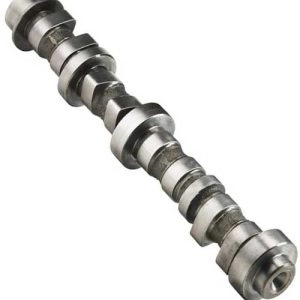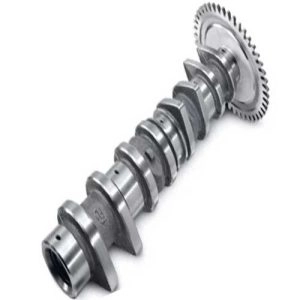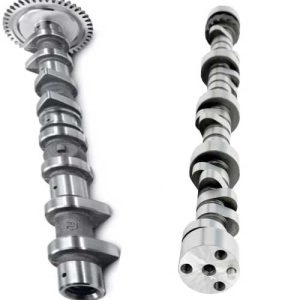The steering column is one of the car parts whose importance and function are unknown to many people. It is sometimes referred to as the camshaft, which is a cylindrical rotating rod located on top of the engine. It consists of several teardrop-shaped elliptical rings, which play an important role during the operation of the engine, opening the air and fire valves for a specified period of time and distance.
In addition, there are springs located on the valves that work to pull and close them once the oval rings reach the highest point on the shaft. Generally, there is a timing shaft in each row of the engine head, which is operated through gears and the timing belt or chain. The camshaft is usually made of a metallic material, such as cast iron or steel, each of which has a specific reason for its use. Cast iron is known for its high resistance to corrosion and the inclusion of other elements in its composition to obtain additional characteristics and functions. Conversely, steel is used for producing high-quality, small volume products, which is more expensive than cast iron.

In this article, we will talk about the steering column, or camshaft, and the top 5 most common causes of its damage that need to be paid attention to and addressed promptly to prevent damage and malfunctions in the car.
Causes of Steering Column Damage

There are five common causes that lead to the malfunction and damage of the steering column, which are:
Oval ring corrosion:The elliptical rings in the steering column sometimes become worn, which leads to a decrease in valve lift, and they may not fully open if the engine is running at a low rotation speed. Conversely, the opposite can occur for the engine in the case of high speeds.
Decrease in Lubrication:The steering column is one of the car components that requires proper lubrication in order to function optimally and without issues. The problem can often be identified through the sound of the engine. If you notice an unusual increase in noise, it may be due to insufficient lubrication, or a decrease in oil pressure. These issues can eventually lead to damage and malfunction of the steering column.
Engine mount damage:There are swinging arms connected to the steering column, working to link it with the valve lifters, intending to form a certain clearance within the set of fire and air valves, and to provide easier driving. If the oil pressure inside the lifters drops, it will significantly affect their performance, and you will notice abnormal sounds that could potentially cause major damage to the camshaft.
Using inappropriate engine oil:Choosing the right engine oil and using it according to the environmental conditions and the car is essential. If you are using a type of thick oil due to driving in winter, you might hear loud noises when starting the engine in the morning, which gradually decrease during driving. In fact, these sounds are a result of the high viscosity of the oil, which prevents it from flowing smoothly to lubricate all the engine components. Here, you should use another suitable oil, as using inappropriate oil for extended periods could lead to the failure of the timing shaft. It's worth mentioning that this problem is common in Tahoe and Yukon cars.
Incorrect mechanical intervention:Some issues can occur that lead to camshaft damage during mechanical intervention on the car. For instance, when changing the timing belt, or if the correct balance between the pistons and valves isn't achieved, this can result in a malfunction in the camshaft.
Types of Steering Column

There are three types of steering columns, namely the upper valve, the single steering column, and the double steering column.
Overhead Valves (OHV):It is a single camshaft situated within the engine block. The motion is transferred by means of pushrods and rocker arms to operate the valves, according to the valve train mechanism. Generally, this type of camshaft was widely used in the past, specifically in American cars, and is still currently used in some sports cars and large trucks. However, since this type requires a lot of equipment to operate the valves, controlling the timing at higher RPM becomes more difficult.
Single Steering Column:There is also a single timing shaft mounted on the top of the engine, and motion is transferred through the timing belt to operate the valves either through the arms or directly through the lifters. The negative thing about this type is that it requires a chain or belt with tensioners and tracks, which must be replaced over time. However, unlike the previous type, it can easily control precise timing at a larger number of revolutions, and you can install 3 or 4 valves per cylinder.
Dual Steering Column:It is the type approved in most modern cars, as it contains...Steering ColumnWith four valves for each cylinder, the function of the first shaft is to control the fire valves, while the second is to operate the air valves. This type allows for a greater flow of air through the engine, which increases horsepower. It is characterized by its ability to reduce fuel consumption. The negative aspect of this type is that it is large and complex, and like the previous type, it requires belts or chains with tracks and tensioners that must be replaced over time.

Comments